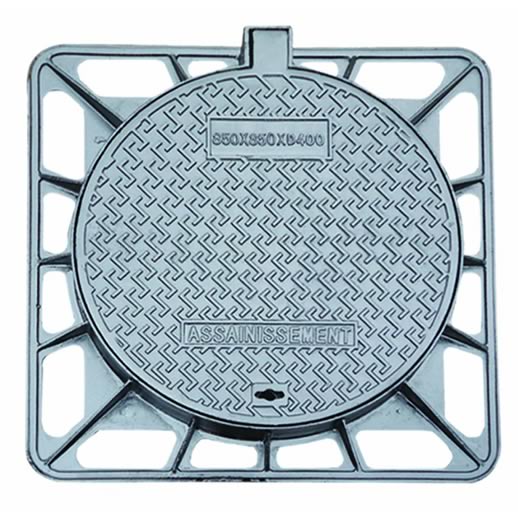The Role of Tree Grates in Urban Streetscape Design and Tree Health
The Importance of Street Tree Grates in Urban Environments
Urban environments are increasingly characterized by their dense populations, towering buildings, and expansive concrete structures. Amidst this concrete jungle, trees play a crucial role in enhancing the aesthetics of the city, improving air quality, and providing shade. However, one often-overlooked component that supports the health of urban trees is the street tree grate. Street tree grates are not just functional installations; they are integral to the survival of urban vegetation and have far-reaching implications for sustainable city design.
What Are Street Tree Grates?
Street tree grates are metal or decorative structures placed around the base of street trees in sidewalks and plazas. They serve multiple purposes primarily, they protect the tree's root system, provide a stable walking surface for pedestrians, and allow for the passage of air, water, and nutrients to the roots. Properly designed grates encourage healthy tree growth while mitigating the common challenges of urban tree management, such as soil compaction and root damage.
Benefits of Street Tree Grates
1. Enhanced Tree Health One of the primary benefits of street tree grates is their role in promoting tree health. By providing a breathable surface, grates allow rainwater to penetrate the soil, ensuring that tree roots receive essential hydration. Additionally, grates prevent soil compaction caused by foot traffic, protecting delicate root systems from stress and damage.
2. Pedestrian Safety Urban sidewalks are often crowded. Street tree grates create a dedicated space for trees without obstructing pedestrian paths. Grates can be designed with smooth edges and adequate spacing to minimize tripping hazards, enhancing overall safety for city dwellers.
3. Aesthetic Appeal Grates come in various designs, materials, and finishes, allowing for creative expression and integration with urban design themes. A well-designed grate can complement a city's architecture, turning a functional element into an artistic one. Beautifully crafted grates can act as focal points in urban landscapes, drawing attention to the greenery and improving the overall appeal of the street.
4. Environmental Benefits Trees are vital to sustainable urban infrastructure, helping to combat pollution and mitigate the urban heat island effect. By supporting healthy tree growth, grates contribute to the broader environmental benefits of urban forestry, which include improved air quality, carbon sequestration, and increased biodiversity. Moreover, well-maintained urban trees can help reduce energy costs by providing shade, thus lowering temperatures in nearby buildings.
street tree grates

5. Stormwater Management One significant challenge for urban areas is managing stormwater runoff. Street tree grates can facilitate improved drainage and capture rainwater, promoting natural water infiltration into the soil. This process reduces the likelihood of flooding and enhances groundwater recharge rather than relying solely on storm drains, which can become overwhelmed during heavy rainfall.
Considerations for Effective Design
The effectiveness of street tree grates depends on thoughtful design and appropriate installation. Here are some key considerations
- Material Choice Grates must be made of durable materials that can withstand heavy foot traffic and environmental factors. Options such as cast iron, aluminum, or recycled plastic are often used for their strength and longevity.
- Design and Size The design should prioritize both function and aesthetics. Grates should allow for adequate light and moisture penetration and accommodate the mature growth of the tree. An overly restrictive design may stifle the tree's ability to thrive.
- Maintenance Grates should be easy to clean and maintain to prevent debris accumulation and ensure functionality. Regular upkeep extends the life of both the grate and the tree.
Conclusion
Street tree grates play a vital role in urban landscaping, bridging the gap between nature and urbanity. As cities continue to evolve, the integration of functional and aesthetically pleasing tree grates will become increasingly important. By fostering healthy trees, enhancing pedestrian safety, and contributing to environmental sustainability, these often-overlooked installations are crucial to creating vibrant, livable urban spaces. As we invest in the ecological health of our cities, we must also prioritize the thoughtful design and implementation of street tree grates, ensuring that our urban forests can thrive amid the concrete landscape.
-
The Smarter Choice for Pedestrian AreasNewsJun.30,2025
-
The Gold Standard in Round Drain CoversNewsJun.30,2025
-
The Gold Standard in Manhole Cover SystemsNewsJun.30,2025
-
Superior Drainage Solutions with Premium Gully GratesNewsJun.30,2025
-
Superior Drainage Solutions for Global InfrastructureNewsJun.30,2025
-
Square Manhole Solutions for Modern InfrastructureNewsJun.30,2025
-
Premium Manhole Covers for Modern InfrastructureNewsJun.30,2025
